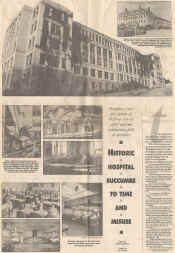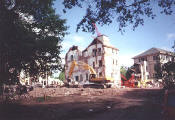|
The sanatorium complex was eligible under Criterion A and C for inclusion on the National Register of Historic Places. Criterion A states that a property may be registered if it is associated with events that have made a significant contribution to the broad patterns of our history. Under Criterion C, a property may be registered if it embodies the distinctive characteristics of a type, period, or method of construction. Although the sanatorium buildings were deemed safe and structurally sound, county officials gave little thought to rebuilding them for other uses, and historical preservation was not considered to be an option. Consequently, in August of 1993, the main complex of the sanatorium was destroyed and the once crown jewel of Essex County was finally laid to rest, ending an important era in our local, state and national history. Its long journey was at last complete and its destiny to be forgotten had been fulfilled. Nearly a century of time had been erased, and lost forever. |











